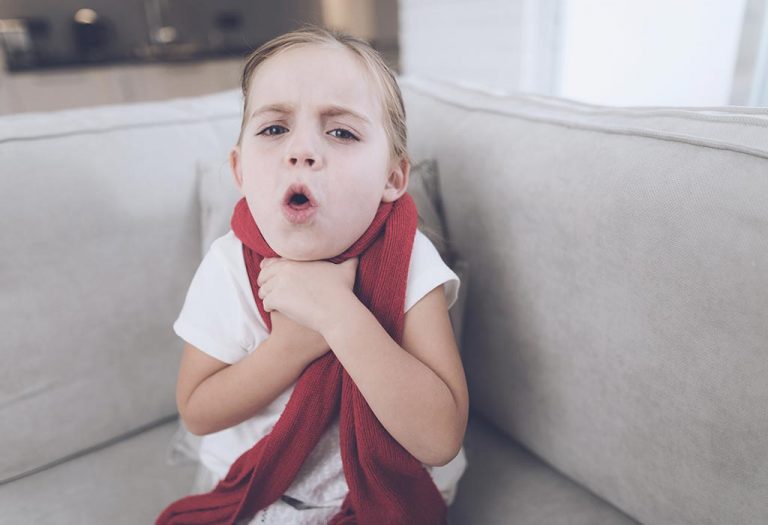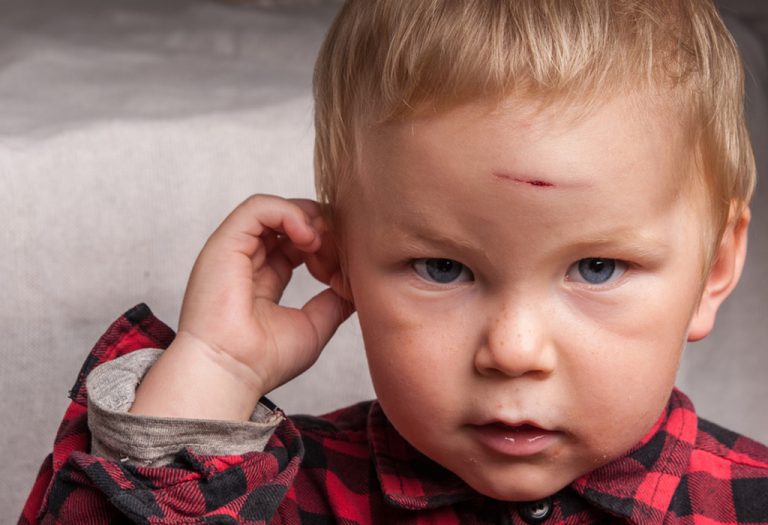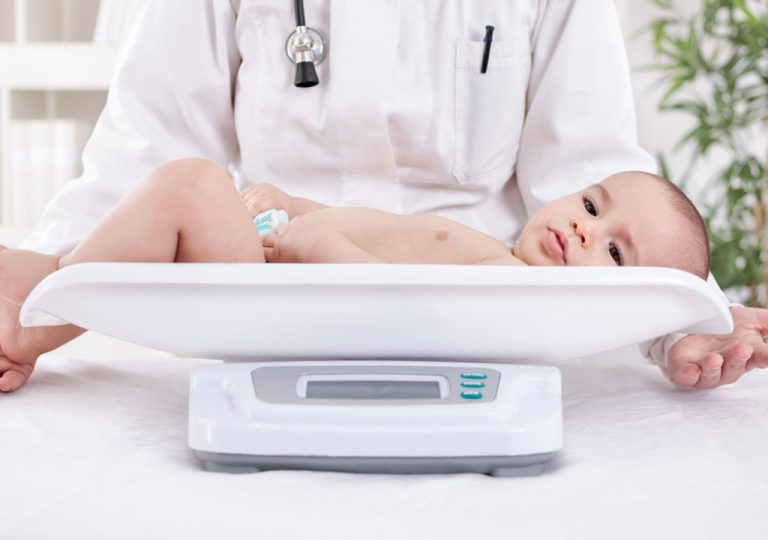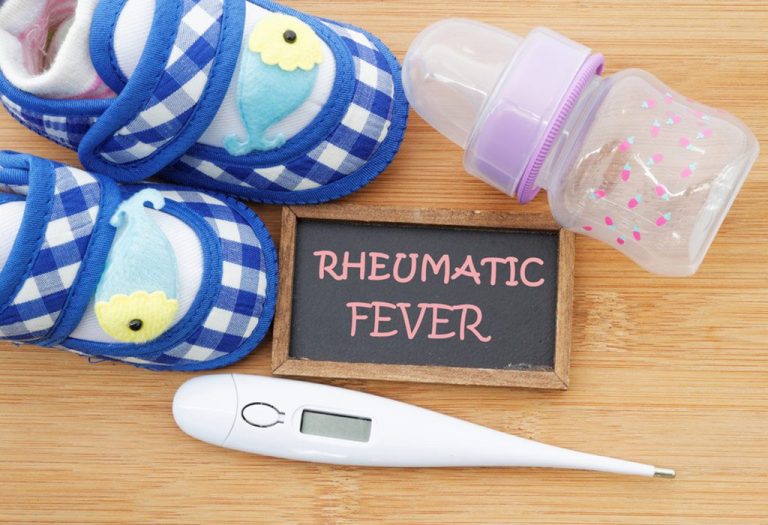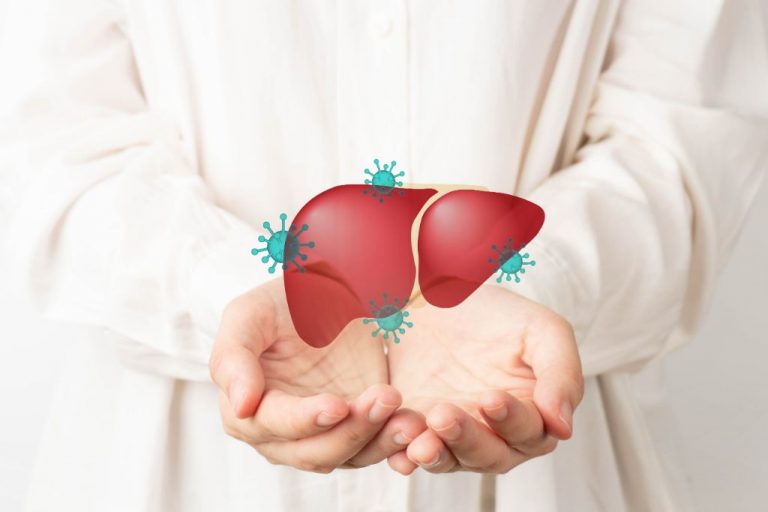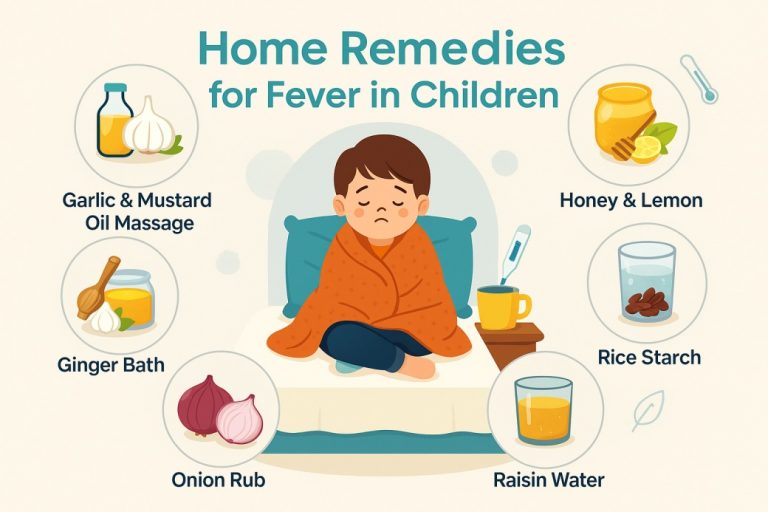Strep Throat in Toddlers and Kids: Causes, Symptoms, & Treatments
Strep throat is a common childhood infection that most of us have suffered at some point. It is caused by a bacterial infection, specifically group A streptococcus, and can lead to significant discomfort if not treated promptly. This article talks at length about the causes, symptoms, and remedies for strep throat in children. Understanding strep throat in toddlers and kids is essential for parents to recognize early warning signs such as a sore throat, fever, or difficulty swallowing. With proper care, including timely medical attention and home remedies, children can recover quickly and return to their daily routines.
What Is Strep Throat?
Strep throat is a type of bacterial infection, caused by a type of bacteria called Streptococcus. This infection can last up to a week and needs to be treated with antibiotics. With proper medicines and rest, a child having strep throat can soon become well again.
At What Age Are Children More Prone to Strep Throat?
School-going kids are the most prone to catching strep throat infection. Can babies catch strep throat? Yes, if they come into close contact with someone else who is infected. However, babies are not prone to catching strep throat easily.
Is It Contagious?
Yes, the bacteria live in the nose and throat of infected people. So this infection can be spread by sneezing, coughing, and can be contracted by shaking hands with someone who is infected.
What Causes Strep Throat in Children?
The bacteria that causes strep throat spread in these various ways:
1. Through the Air Around Them
When an affected person sneezes or coughs, the bacteria spread in the air which can be inhaled by the toddler.
2. Personal Items
Sharing items like towels, handkerchieves, plates, spoons, etc., can cause the toddler to catch the infection. Shared spaces also assist in the spread of germs.
3. Physical Contact
Physical contact, like kissing or hugging someone who is infected, can lead to the child getting affected by strep throat.
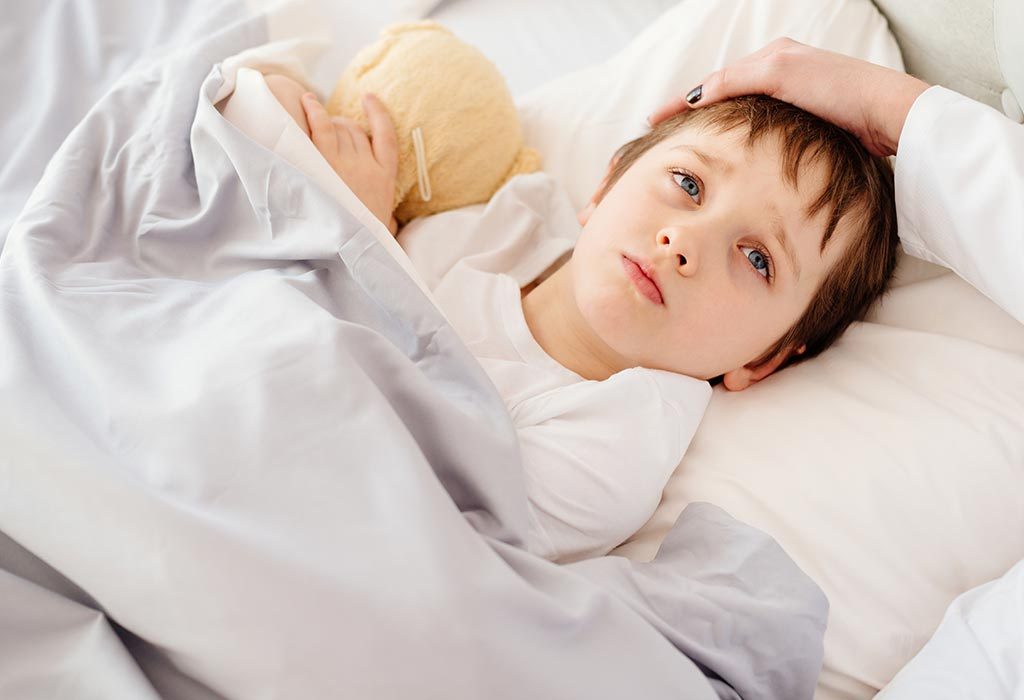
Signs and Symptoms of Strep Throat in Toddlers and Kids
What does strep throat look like in kids? Here are the common symptoms of strep throat:
1. Redness in Throat
This is the most obvious sign of strep throat in toddlers and kids. The back of the throat becomes red and inflamed.
2. Swelling in Tonsils
The tonsils at the back of the throat become red and swollen.
3. White Spots
These white spots are pus pockets. They contain white blood cells from our body that aggregate at the site of the infection to attack and destroy the bacteria.
4. Vomiting
The child may feel nauseated and may vomit any food that he eats.
5. High Temperature
The child will have a fever of more than 100.3 degrees Fahrenheit.
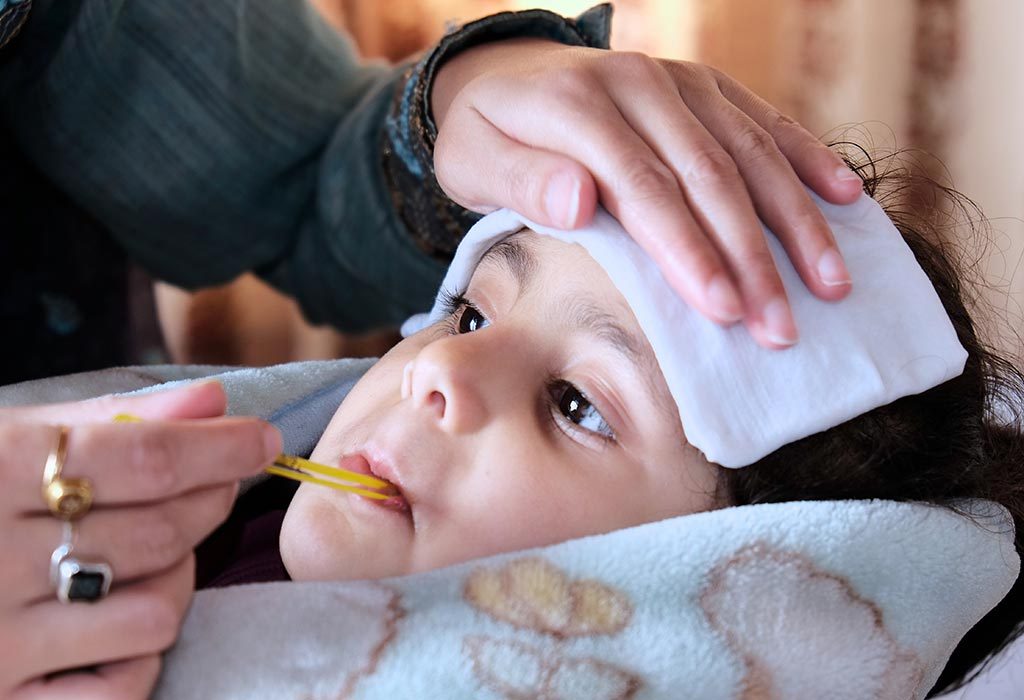
6. Throat Pain
The child will have extreme pain while swallowing, leading to a loss of appetite.
7. A Sore Throat
The bacteria affects the child’s voice, making it hoarse.
8. Aches
The infected child may suffer from a headache, stomach ache, and pain all over the body.
9. Scarlet Fever
In the case of a very severe infection, the child will have red, rough rashes on the body, reddish cheeks, and bright red blisters on the tongue.
What Are the Complications of Strep Throat in Children?
If left untreated or only partially treated, strep throat can lead to the following complications in kids:
- Nerve Disorder: It can cause an autoimmune nervous psychiatric disorder in children leading to obsessive-compulsive disorder and involuntary muscle twitches.
- Kidney Disease: It can cause glomerulonephritis in children. This causes swelling in the kidneys, leading to blood in the urine.
- Rheumatic Fever: The valves of the heart and nervous system get damaged, leading to the joints in the body getting inflamed.
- Peritonsillar Abscess: If left untreated, strep throat can spread into the neck tissues and cause swelling and an infection called a peritonsillar abscess. A large mass is visible on the neck, and this prevents the child from breathing and swallowing.
- Retropharyngeal Abscess: The bacteria can cause this infection in the back of the throat, located behind the wall of the pharynx.
- Otitis Media: This is a complication of strep throat where the infection spreads to the middle ear. It can cause deafness if left untreated.
- Meningitis: The infection can spread to the meninges or the lining of the brain and the spinal cord. This is called meningitis.
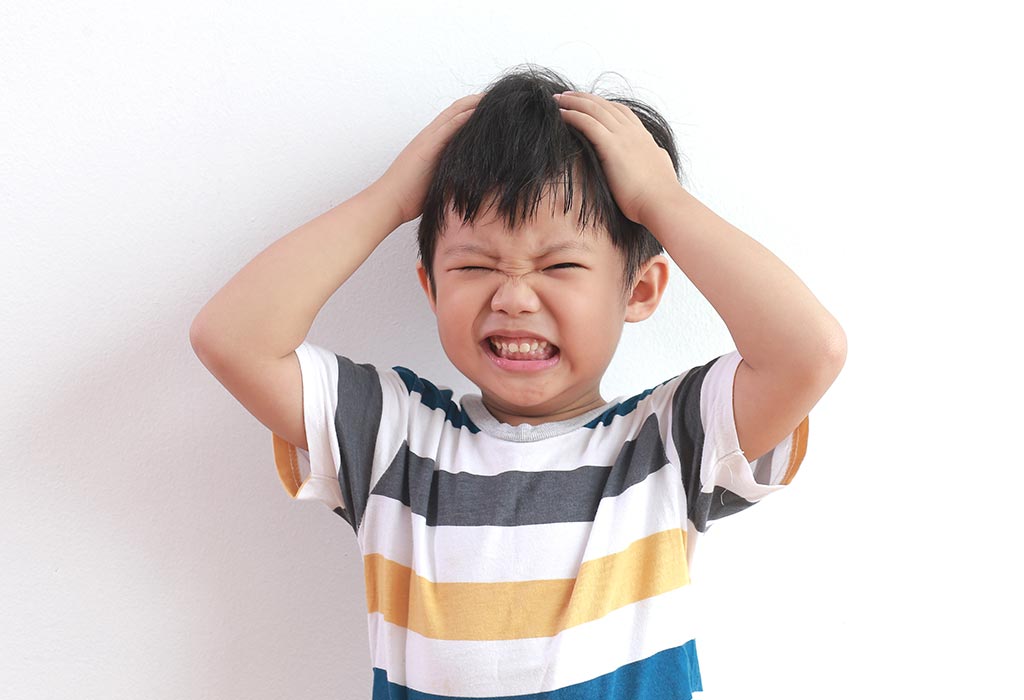
- Pneumonia: It can spread from the throat and cause an infection in the lungs, known as pneumonia.
- Toxic Shock Syndrome: This is a rare complication, but it can be life-threatening or even fatal. The strep bacteria can infect the blood and lead to multiple organ failure.
- Tonsillitis: Strep throat can also cause inflammation and infection of the tonsils, called tonsillitis. Symptoms include high fever, white spots on the tonsils, as well as red and swollen tonsils.
- Lymph Node Infection: Strep bacteria can also infect the lymph nodes in the body. This can seriously compromise the body’s immunity and resistance to other infectious germs.
How Is Strep Throat Diagnosed?
Strep throat can be diagnosed by the following methods:
1. Physical Exam
The doctor will examine the ear, nose, and throat of the child. He will check for swollen tonsils, redness, white spots, etc.
2. Strep Antigen
This is a test done by the doctor where he swabs the back of the throat with a Q-tip and tests this mucus for the presence of the streptococcal antigen. This is a fast test and gives results in minutes.
3. Throat Culture
If the strep antigen test is not conclusive, mucus from the tonsils is taken and sent to the lab for culturing on a petri dish. It can take 2 or more days to get the results of this test.
Treatment for Strep Throat in Children
Here are the commonly used treatments for strep throat:
1. Antibiotics
A ten-day course of antibiotics is prescribed for the infected child.
2. Other Medications
The doctor may prescribe pain relievers like ibuprofen and fever control medicine like acetaminophen to provide relief to the child.

Home Remedies for Strep Throat in Kids
Strep throat in toddlers, home remedies include:
- Saltwater gargling: Gargling thrice a day with warm salt water can lessen the throat pain and flush out harmful bacteria, making it easier for the child to swallow.
- Adequate hydration: Ensure that the child gets plenty of water to drink. This will reduce irritation and lubricate the infected areas.
- Liquid food: The child will have difficulty chewing and swallowing solid food. But ensure that he gets his nutrition and stays strong with liquid foods like soups, juices, milk, porridge, fruit puree etc. The hotter the options, the better he’ll feel!
- Warm water: Give the child frequent sips of warm water. The water should be warm enough to comfortably swallow.
- Honey: Mix a teaspoon of honey in a glass of lukewarm water and give it to the child. This moisturizes the throat and lessens pain.
- Steam inhalation: Use a steamer to make your child inhale the steam deeply through the mouth and throat, which will help relieve soreness.
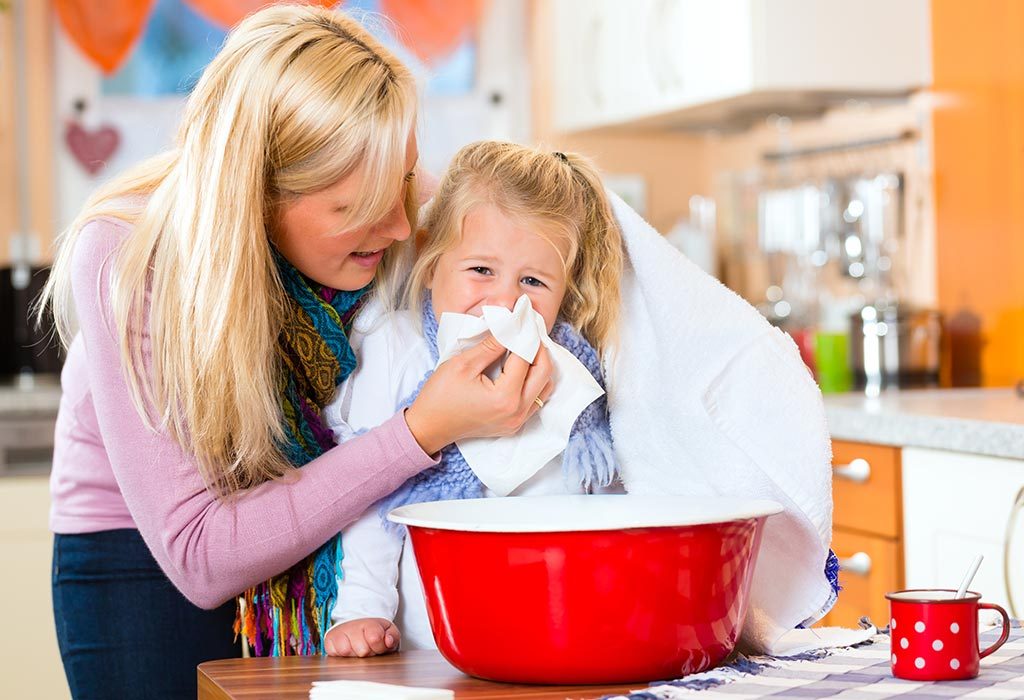
- Yoghurt: Give the child a spoonful of thick Greek yoghurt and let it stay in the throat for a few minutes. It has antiseptic properties that can help good bacteria multiply in the throat.
- Ginger: Boil crushed ginger in water. Sweeten with honey and give it to the child to soothe his throat ache.
- Lemon juice: Lemon juice has vitamin C and antioxidants that will help fight off bacteria. Add lemon juice to warm water, sweeten with honey and give your child sips of this drink several times a day.
- Apple Cider Vinegar: Mix a teaspoon of apple cider vinegar in warm water and have the child drink it twice a day. This will relieve the throat pain.
- Garlic: Garlic is an antimicrobial agent which can kill harmful bacteria and viruses. Make some garlic paste by crushing some cloves of garlic. Put this in boiling water and let it simmer for 7 to 10 minutes. Once it has become more concentrated, turn off the heat, strain it, and let it cool. Make the child drink this a few times a day.
What to Do If Your Child Is Suffering From Recurring Strep Throat?
In case of frequent strep throat in a child, here is what you can do:
1. Wash your child’s hands regularly – as well as yours!
Use a sanitizing soap or handwash to get rid of harmful bacteria. Keep a sanitiser handy in case you are outside and unable to gain access to soap or water.
2. Do not share food.
Do not let the child share food or drinks if he is vulnerable to strep infection frequently.
3. Stay away from infected people.
Make sure an infected family member or sibling stays away from the child prone to strep infections.
How to Prevent Strep Throat in Children?
There are some things you can do to prevent your child from getting strep throat:
1. Isolate the Infected Person
Isolate the infected person for at least up until two days of antibiotics have been taken, to prevent the spread of bacteria.
2. Good Hygiene
Good hygiene should be practised by washing hands with soap often, especially after coming home after playing or from school.
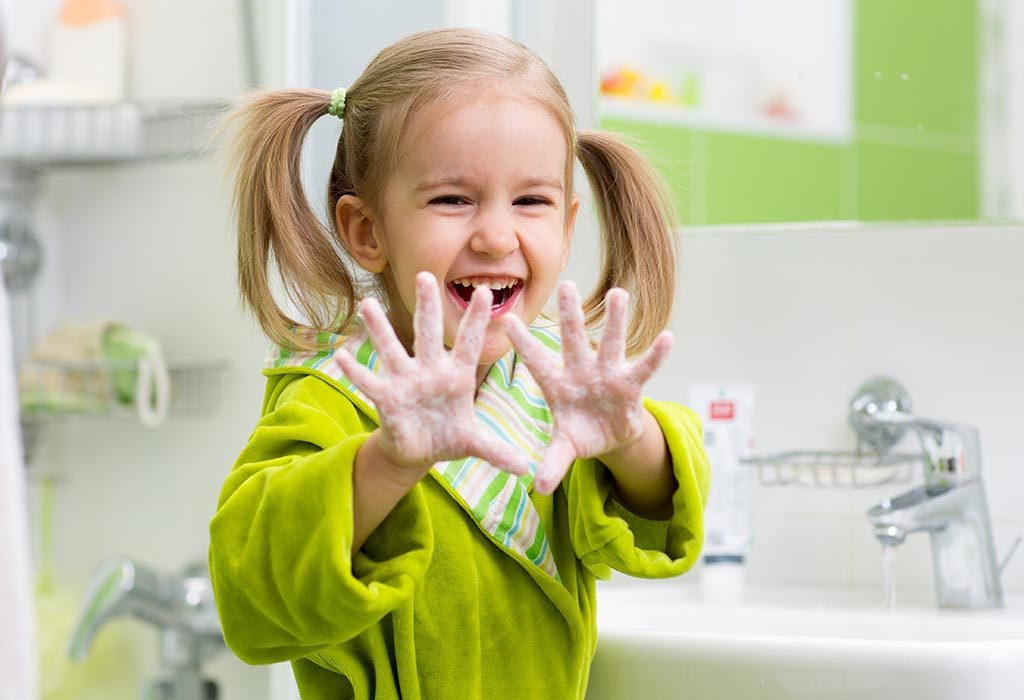
3. Do Not Share Drinks
Avoid drinking from the same bottle as a sick kid and do not eat off the same plate or dish.
4. Replace the Child’s Toothbrush
After an infection, replace his toothbrush as it can still contain the bacteria and cause the infection to reoccur.
5. Cover Mouth while Sneezing
Teach your child to cover his mouth and nose while coughing or sneezing, and to use handkerchieves.
When to Consult a Paediatrician
Strep throat in pre-schoolers is very common and contagious. Here is when you need to go to the doctor:
- If body temperature is very high (more than 100.3 F) in infants, who are 1 to 3-months-old
- Red rashes all over the body
- Unable to breathe properly or swallow
- If symptoms do not reduce even after 2 days of taking antibiotics
FAQs
1. How long is a child with strep throat contagious?
A child with strep throat is typically contagious for about 24 hours after starting antibiotics. Without treatment, they may remain contagious for up to 2-3 weeks. Ensuring proper medication and maintaining good hygiene practices can reduce the risk of spreading the infection.
2. Can strep throat in kids affect their behavior or mood?
Yes, strep throat in kids can sometimes lead to changes in behavior or mood. Children may become unusually irritable, withdrawn, or fatigued due to the discomfort and pain caused by the infection. In rare cases, untreated strep throat can contribute to pediatric autoimmune neuropsychiatric disorders associated with streptococcal infections (PANDAS), which may cause sudden onset of anxiety, obsessive-compulsive behaviors, or tics.
Strep throat is common among preschoolers and toddlers, and can only be cured with antibiotics. It can be prevented by practising good hygiene, isolating infected children, and avoiding the sharing of personal items belonging to an infected individual.
References/Resources:
1. Does Your Child Have Strep Throat?; Stanford Medicine; https://healthier.stanfordchildrens.org/en/does-your-child-have-strep-throat/
2. How Do I Know if My Child Has Strep Throat?; Children’s Healthcare of Atlanta; https://www.choa.org/parent-resources/everyday-illnesses/strep-throat-in-kids
3. Strep Throat, Sore Throat or Tonsillitis: What’s the Difference?; American Academy of Pediatrics; https://www.healthychildren.org/English/health-issues/conditions/ear-nose-throat/Pages/The-Difference-Between-a-Sore-Throat-Strep-and-Tonsillitis.aspx
4. Strep throat; Mayo Clinic; https://www.mayoclinic.org/diseases-conditions/strep-throat/symptoms-causes/syc-20350338
5. Strep Throat in Kids and Teens; Nemours Kids Health; https://kidshealth.org/en/parents/strep-throat.html
6. Sore Throat; American Academy of Pediatrics; https://www.healthychildren.org/English/tips-tools/symptom-checker/Pages/symptomviewer.aspx?symptom=Sore%20Throat
7. Strep Throat; Cleveland Clinic; https://my.clevelandclinic.org/health/diseases/4602-strep-throat
Also Read:
Typhoid in Toddler and Babies
Sore Throat in Babies and Toddlers
Cystic Fibrosis in Babies and Children
Scarlet Fever in Babies and Toddlers
Was This Article Helpful?
Parenting is a huge responsibility, for you as a caregiver, but also for us as a parenting content platform. We understand that and take our responsibility of creating credible content seriously. FirstCry Parenting articles are written and published only after extensive research using factually sound references to deliver quality content that is accurate, validated by experts, and completely reliable. To understand how we go about creating content that is credible, read our editorial policy here.





